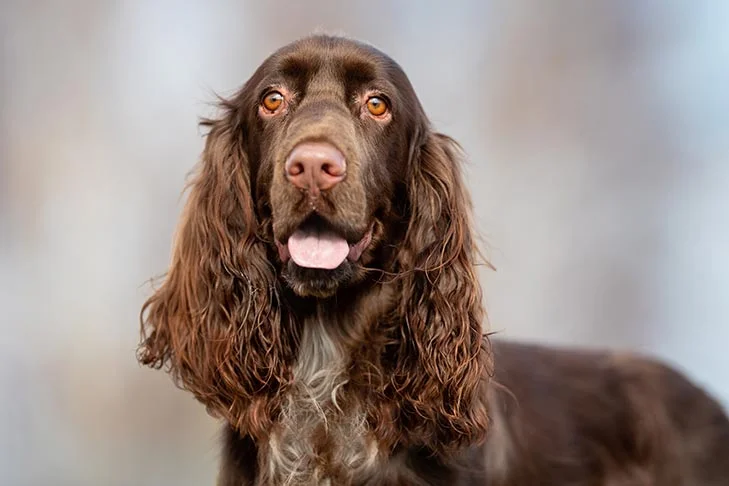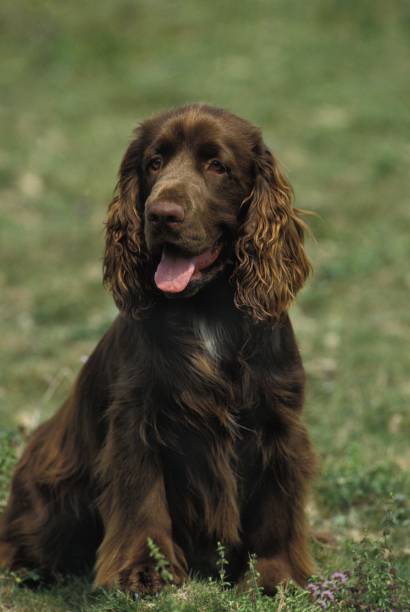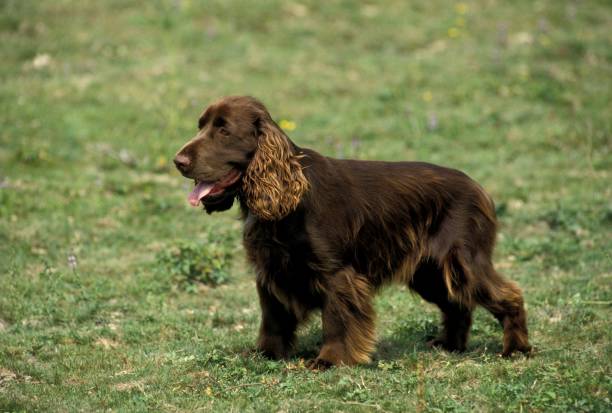Field Spaniel
Average sizes and life
expectancy of the breed.
Height
18 inches (male)
17 inches (female)
Weight
35-50 pounds
Life Expectancy
12-13 years
Breed Traits & Characteristics
About the Breed

Owning a dog is not just a privilege; it’s a responsibility. They depend on us for, at minimum, food and shelter, and deserve much more. When you take a dog into your life, you need to understand the commitment that dog ownership entails.
 Health
Health
Recommended Health Tests From the National Breed Club:
- Hip Evaluation
- Autoimmune Thyroiditis
- Ophthalmologist Evaluation
 Grooming
Grooming
 Exercise
Exercise
 Training
Training
 Nutrition
Nutrition
History
The several breeds of British spaniels that hunters employed to flush game birds were not differentiated as they are now until far into the 1800s. They were instead arranged according to size and job description. When dog exhibitions first appeared in England in the late 20th century, this situation changed. Setting distinct types and breeds suddenly became crucial, and the Field Spaniel—a particular breed of spaniel descended from crosses of the Cocker, English Springer, and Sussex—became such. These early Fields were not only skilled hunters but also instant successes in the show ring.





